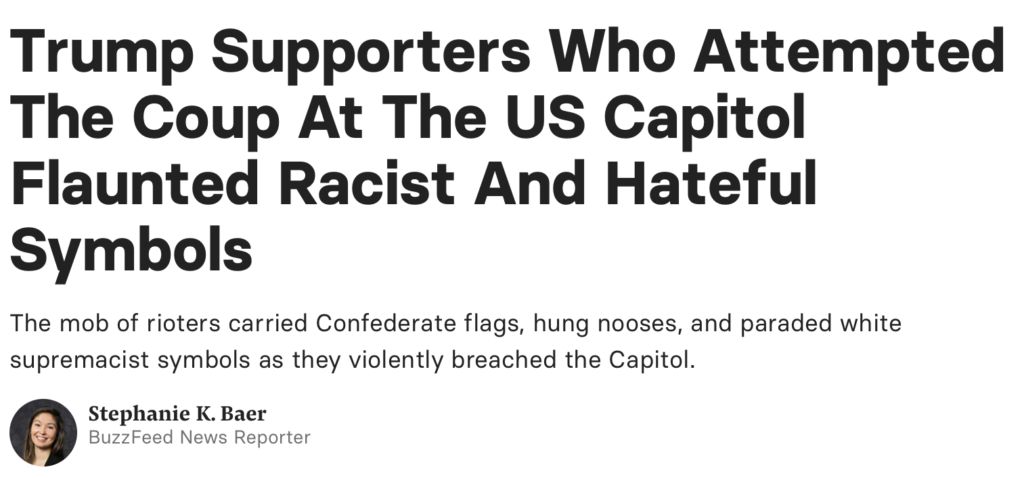Welcome to the Copy Shop – the platform for members of Daily Bruin Copy to rant about the Oxford comma, discuss sensitivity in mass media and attempt to generally demystify the mind-boggling and all-too-misunderstood world of the copy editor.
Emotions ran high across the country as supporters of President Donald Trump broke into the U.S. Capitol on Wednesday to disrupt the certification of Electoral College votes. Amid the uncertainty and fear spreading around the world, copy editors had a big question to answer: How should we word this?
Copy editors often have to make snap decisions when editing breaking stories about civil disturbances. Part of the job is to make sure publications use unbiased language, but it can be difficult to identify and address implicit biases in high-pressure, shocking situations.
Deciding whether to frame a demonstration as a protest, riot or coup exemplifies a larger consideration copy editors have to take into account when editing stories. Language holds power, and the connotations of the language surrounding such emotionally charged events are especially important to address.
Months before Wednesday’s events, Daily Bruin Copy editors spent the summer editing stories that covered protests in Westwood in response to the death of George Floyd while he was in police custody May 25.
The Bruin’s news coverage typically referred to Black Lives Matter activism in the Westwood area and across the country as protests, though some events were more peaceful than others. However, some right-leaning news outlets, such as Fox News, and Republican politicians, such as Sen. Tom Cotton, almost exclusively referred to the activism as riots and denounced the activities as violent and illegal.
Daily Bruin Copy’s decision to, in most cases, label those events as protests instead of riots was due in large part to the connotation of the term riot.
As described in the Associated Press Stylebook entry “riot, unrest, protest, demonstration, uprising, revolt,” the term riot is typically synonymous with violence and chaos, and inciting to riot is a criminal offense. Riots are generally uncontrolled and often are associated with destruction of property.
Labeling activism against police brutality and for racial justice as rioting is a tactic that has been used to stigmatize activists and their causes for decades.
The trend began in the 1960s, when the term riot was used to emphasize a sense of chaos and disorder during civil rights activism across the country. According to TIME, the term riot has often been associated with race-related activism and used to lessen the value of movements like the civil rights movement and the Black Lives Matter movement. It can trivialize the value of movements by reducing them to criminal actions and ignoring the underlying causes they represent.
A protest, on the other hand, has a very different definition. The AP Stylebook states that protests “refer to specific actions such as marches, sit-ins, rallies or other actions meant to register dissent. They can be legal or illegal, organized or spontaneous, peaceful or violent, and involve any number of people.”
This brings up an important distinction between protests and riots for copy editors to consider: the central intent of the activity. Protests are primarily intended to bring public attention to a particular issue, whereas riots’ main focus is on destruction and chaos.
Wednesday’s events at the Capitol were thus the subject of debate among copy editors across the country. The pro-Trump demonstrators had a stated intent of disrupting the Electoral College confirmation, but they broke windows, destroyed media equipment and vandalized offices in the Capitol.
Fortunately, the AP Stylebook tweeted out a set of guidelines for characterizing civil disturbances within hours of the events at the Capitol. The guidelines addressed a variety of terminology being used around the world to describe what was happening.
Considering that armed protesters broke into the building, overwhelmed Capitol police, interrupted the process of certifying Electoral College votes and forced the evacuation of the vice president of the United States and members of Congress, “protest” may be too mild a word.
/4— APStylebook (@APStylebook) January 6, 2021
Some of the most common terms used and recommended by AP were mob, riot and protest. AP notably discouraged referring to the events as a coup, saying they did not represent an attempt at organized seizure of political power.
We may of course quote others alleging a coup or attempted coup, but so far AP has not seen conclusive evidence that the protesters’ specific aim was to take over the government, so at this stage we are avoiding the term in AP copy unless attributed.
/7— APStylebook (@APStylebook) January 6, 2021
The Bruin, which generally follows the guidelines of the AP Stylebook, opted to use the term riot in both editorials and news articles. Many major news organizations also declined to refer to the events as a coup, with The New York Times even publishing an article explaining the significance of the term.
Other major organizations, however, continued to use the term coup throughout their coverage. A Buzzfeed News article published after the AP Stylebook guidelines were released even described the event as a coup in its headline.
So which organizations were correct? It depended on the intent of the publication. Stronger language like coup allowed writers to convey a heightened sense of alarm and disapproval at the events but ran the risk of appearing biased or inaccurate to readers. More neutral language like protest may have failed to convey the gravity of the situation. Every choice of wording had implied meanings to readers, however, so copy editors had to make careful choices about how to frame the news for their organization.
Just like current events, Copy’s preferred terms are constantly evolving. As situations change, so must the language used to describe them, and the best we can do as journalists is keep context and connotations in mind.



